Summary
This note sets out the authors understanding of the current position on climate change and describes the physical actions that will need to be taken to halt it. Although we are running out of time it is optimistic and outlines the simple straight forward and safe proven solutions that should really prevent the horrors of runaway climate over heating until more sophisticated approaches are developed. In addition it also outlines radical political and cultural changes that equally must be achieved and may be more difficult to solve than the physical ones.
An appendix describes how a 100% zero carbon lifestyle has been easily and painlessly achieved by an elderly couple in the South of England.
Introduction
Even when still at school it seemed clear to me that mankind was living in a completely unsustainable fashion. I remember asking a senior master why it didn’t matter that we were getting almost all our energy (electricity, heating, shipping, flying, trains, road transport etc) by oxidising carbon in some form or other to carbon dioxide which then just built up in the air. The answer was always the same. “Don’t worry about that. There is far too much air for humans ever to change it.” Oh we do so wish that this was true. Even then, nearly 70 years ago, I wondered. The layer of air around the world is not very thick. Only a very few miles up it is getting seriously thin and we have been pouring out the CO2 into this thin layer from many millions of sources for about 200 years. It was over 100 years ago that scientists first established that CO2 in the air made the air behave like glass in a green house and so make the greenhouse heat up in the sun.
Where are we now
The more CO2 the greater the heating. The statistics are endless. Here are a few. The list is already out of date.
**The latest World Meteorological Organisation figures on CO2 levels (in
2014) reached a record level of almost 400 parts per million which is 43%
more than pre-industrial levels. (it is now thought to have exceeded this
critical figure of 400 parts per million).
**2015 was the hottest year on record with average temperatures 0.76C
above1961-90 average.
**March and now April 2016 were the hottest world wide ever.
**2016 and now 2017 are expected to be the hottest years ever
**Ocean temperatures at 700M and 2000M deep broke all records in 2015.
**Devastating heat waves have occurred in many places including currently in India killing as many as 2000 people in the southern states of Telangana and Andhra Pradesh.
** India recorded it’s hottest day ever on 19th May when the mercury in Phalodi rose to 51C. In Kuwait thermometers hit a record 54C
**The maximum extent of Arctic sea ice over the winter set a record low . The extent in May this year was the lowest for that month ever.
**Sea levels are currently at their highest on record and rising. London Transport engineers recently voiced their concern that the whole underground railway system could now be inundated by the extreme storms that we must expect.
**In recent years many locations saw record rainfall. More than 11 months worth of rain . fell in one day in Libya. Marrakech received 13 months worth in an hour in August.
**Southern Africa has its driest season since 1932-33. Drought exacerbated forest fires in Indonesia. The 600 sq miles of wild fires in Canada has destroyed a complete city.
**When tropical cyclone Patricia hit Mexico in October, it was the strongest storm on record in the Atlantic or eastern Pacific. Sustained wind speeds reached 215mph.
These figures and many others confirm what we have all suspected. CO2 concentrations are increasing more rapidly now than at any time in the last 66m years and as expected and as we have been repeatedly warned by the scientists the weather is also changing fast.
What we have to do
It is easy at this stage to be defeatist. The task of getting the whole world to stop oxidising fossil carbon (coal, shale gas or petroleum) in a few years is clearly immense. The official target is to keep global temperature rise to less than 2C (preferably less than1.5C) by 2050. This will require a nearly 100% reduction in carbon based fossil fuel consumption. At the present rate of increase of CO2 concentration the estimated temperature rise by 2050 is about 4 DegC www.iea.org/publications/scenariosandprojections/ .
Think what this means. To meet this target and prevent uncontrollable run away climate heating the list of devices that will have to be scrapped is huge. The following is a taste. All aeroplanes to be scrapped and no new ones built unless they are to be powered by an as yet not invented light clean renewable fuel. We are currently still building aeroplanes that will consume huge amounts of fossil fuel and are expected to be serviceable for as much as another 40 years.
Flying is a special case and a difficult one. It is not possible to continue flying the way we do now without burning fossil fuel. Aeroplanes use large amounts of fuel just to stay in the air so it is important to keep flight times short. Of course keeping flight times short means flying faster which also uses much more fuel per mile travelled. Fuel saving by keeping aeroplanes light can only go so far. Planes are already as light as the designers can make them and we can’t make passengers and their luggage lighter. (Another good reason for tackling obesity!) So no more diesel, petrol or jet engines anywhere whether in super tankers or chain saws, garden mowers or airliners. Which means that most of the road vehicles and tractors we are currently making and selling and using will have to go.
In addition to the long list of existing devices which we currently take for granted and will now have to be abandoned we are going to have to develop many new systems and processes. Examples are ‘zero carbon’ agriculture for both live stock and crops, fossil fuel free blast furnaces for steel making or carbon free kilns for making cement, clean renewable powered shipping. All these will have to be tackled. They are all solvable but we need to get on with it.
We must never forget that the aim is Zero carbon and with so much to do we cannot afford to delay. 2050 is not far away. Even 80% by 2050 is like getting to the station 10 minutes after the last train has left. 80% is useless and gives a false sense of security. Similarly ‘Low’ carbon is also useless. You still miss the train. What we have to go for is not less carbon it is ‘No’ carbon. If you accept what I have said we have to achieve that ‘zero carbon’ by 2050 at the very latest. With so much at stake even that may well be too late but our only hope is to be determined and optimistic. It can be done but we have to get on with it now.
To achieve zero carbon we have to attack the problem from three very different directions, technical, political and cultural.
Technical
Electricity from renewable sources is the cleanest, most reliable and most versatile form of energy and must become the basic form of energy throughout the world. Our plans must not rely on new or unproven technology. There is not time. We should only consider those sources of non polluting renewable energy that are substantially fully developed, safe and tested. Currently these are solar photovoltaic, solar thermal, onshore and offshore wind, conventional hydro power, tidal lagoon power, tidal current electric power and geothermal electric. Repeated studies have shown these alone can already provide all the raw energy we need, generally in the form of electricity and sometimes as solar or geothermal heat which can be converted to electricity by means of steam turbines or some other sorts of heat engines. (A recent study in USA reported by the Union of Concerned Scientists estimated that wind alone could produce five times more electricity than the country currently uses.) Electricity can be made both from large sources such as major hydro schemes fed by large dams with long distance power cables or from small local sources combined with local storage batteries or hydrogen/fuel cell equipment. Batteries are developing fast which with widely distributed smaller power sources will become more and more economic. To purchase sufficient batteries to store enough electric power in an ordinary house to allow the house to go off grid is already quite feasible.
For large solar heated installations energy can be stored as heat in high temperature liquid salt and recovered via turbines to make electricity as needed during periods of low wind or low solar radiation.
It is already the governments stated ambition for almost every car or van on our roads to be zero emission by 2050 (also in the Netherlands and Norway) Smaller vehicles are expected to be battery powered while heavy road transport will probably have to be hydrogen/fuel cell powered with rather more reliance placed on electric goods trains. All passenger trains will be electrically powered. It is important to remember that none of this requires particularly new technology and can be done without consuming any fossil fuel.
With so much to do and so little time we simply cannot risk placing reliance on unproven or dangerous technologies. Such unacceptable sources of energy must include existing uranium fuelled nuclear reactors (their fuel is limited and they are doubtfully safe and liable to be extremely expensive ,see Hinkley Point. Also no acceptable means of decommissioning and storing the radio active nuclear waste has yet been agreed), fast breeder nuclear reactors (already well tested and generally rejected as even less safe, see Dounreay), thorium fuelled nuclear reactors (probably safe and clean but unproven and undeveloped), hydrogen fusion power reactors (extremely expensive and as yet undeveloped and unproven).
An example of a popular but unrealistic idea which is frequently suggested is collecting energy from sea waves. In spite of much testing and optimistic talk over the last 40 years I don’t think any device has shown any significant sign of being practical or economic.
Two other suggested sources of lower carbon energy which must be rejected are shale gas obtained by ‘Fracking’ and Carbon Capture and Storage’ ,(CCS).
Fracking produces shale gas which is primarily Methane. Methane when burnt produces CO2 but with the advantage that for a given amount of CO2 release there is more heat given off than is obtained by burning coal or petroleum. However it is still a release of CO2 so can never be part of the move to zero carbon that we must make. The other major disadvantage of fracked shale gas is that it is virtually impossible to obtain shale gas by fracking without releasing significant and increasing amounts of the shale gas which is largely methane into the atmosphere. Methane is a long lasting powerful green house gas many times worse than CO2 so to rely on fracked gas is to accept a system quite as bad as burning coal. A further problem with fracking is it requires the injection into the subsoil and probably water table of large quantities of water and contaminating chemicals. Experience in USA suggests that this frequently gives rise to permanent contamination of drinking water supplies.
The last system which is frequently proposed by governments but which must be rejected is carbon capture and storage, CCS. The proposal is to somehow extract the CO2 from the flue gases of a fossil fuel powered power station and pump it at high pressure into deep depleted porous rock where gas has already been removed. This seems clearly dangerous. Profit would be made by cheating and as far as I know no one has managed to extract a useful proportion of the CO2 at a reasonable cost.
If you must move large weights of material or goods long distances and there isn’t or can’t be a railway, a ship may be the only solution. For the existing fossil fuelled merchant fleet it is not a good one. Economics require the ship to go fairly fast to make as many trips as possible in a given time. However making a ship go fast uses a lot of power and hence fuel. Existing passenger liners and cruise ships produce more green house gas per passenger mile than almost any other way of travelling. Although there has been much research into sail assisted merchant shipping and attractive as it might seem, no one is seriously considering going back to sail, clever and beautiful as the old sailing ships were. However with ample land based renewable electricity to produce hydrogen it will be economic to power ships by means of compressed hydrogen to be consumed in fuel cells to make electricity (and water,H2O). The development of such 100% zero carbon ships is already happening. For ships unlike aeroplanes the probable extra weight of such systems will not be a problem.
Political
To attack the problem of stopping the release of CO2, the main green house gas, by only studying the technical problems is unlikely to be successful. We have seriously to address the problem of how to persuade those countries with large, often proven, reserves of carbon based fossil fuels, coal oil and gas, still in the ground, to leave them there. Remember climate scientists are now generally agreed that to meet that target of keeping average world temperatures not more than 1.5 Deg C above current levels about at least 80% of current known fossil fuels must be left in the ground. We must accept that it is unrealistic and unfair to expect these countries whose economic survival relies on the sale of their fossil fuel reserves to do this voluntarily. They will have to be paid but it will clearly be extremely difficult to agree a fair and realistic price. In negotiating we can always remember that the countries with carbon reserves in the ground will also suffer with all of us the effects of climate change. International aid to finance large renewable sources such as solar or wind farms within these countries might be a negotiating route It is worrying that this problem is hardly being discussed at all at present.
Before we can tackle the problem of compensating countries for the revenue they will lose through leaving their fossil fuel in the ground we will have to start persuading governments and our own in particular that fossil fuel based climate change is a real problem that has to be tackled internationally now, here and by them. It is extraordinary the way so many politicians know the science yet still refuse to accept the obvious implications and urgency of that science and what can and must be done.
Cultural
One of the strangest and possibly most difficult problems of CO2 induced climate change is the refusal of kind honest decent ordinary people to see it as a problem which directly affects them. They close their minds to accepting that their actions now will contribute to major suffering in the not too distant future.
It is quite easy and comfortable to live zero carbon. (see appendix) There are few real problems and several advantages not least of which are the financial ones and security from the vagaries of weather, (including climate change), political instability or fuel cost inflation. But how often do we hear some enthusiastic zero carbon campaigner at the end of an interesting and passionate climate change meeting mention in conversation that they are having a new boiler installed or are flying to Australia to see a new grandchild or going on a cultural cruise to Greece or taking the camper van to the south of France or attending a family wedding in Italy. It is doing all these things which release the CO2 that is racing us into the nightmare of runaway global warming. We are never going to achieve zero carbon until we make any action that releases CO2 socially unacceptable. We need to start thinking of it as somewhere between drunken driving and incest!
—
A note on Zero Carbon Living now…
If we accept that using the grid as a huge electricity storage battery is acceptable then it is reassuring to know that without drawing on any new technology at all a couple in south Hampshire have been living comfortably and economically practically ‘zero carbon’ for the last nine years (for the last two years they have been effectively 100% ‘zero carbon’) With 7KW of photovoltaic panels they make more electricity than they use exporting the surplus to the grid.
This includes the electricity used to charge their electric cars doing about 9000 miles a year.
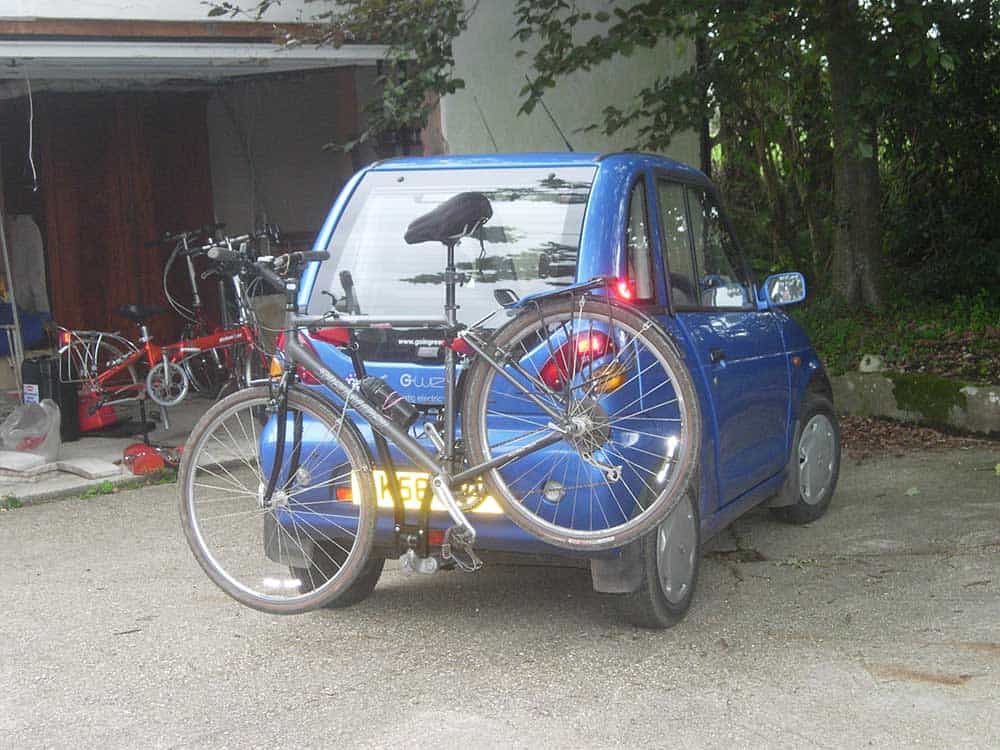
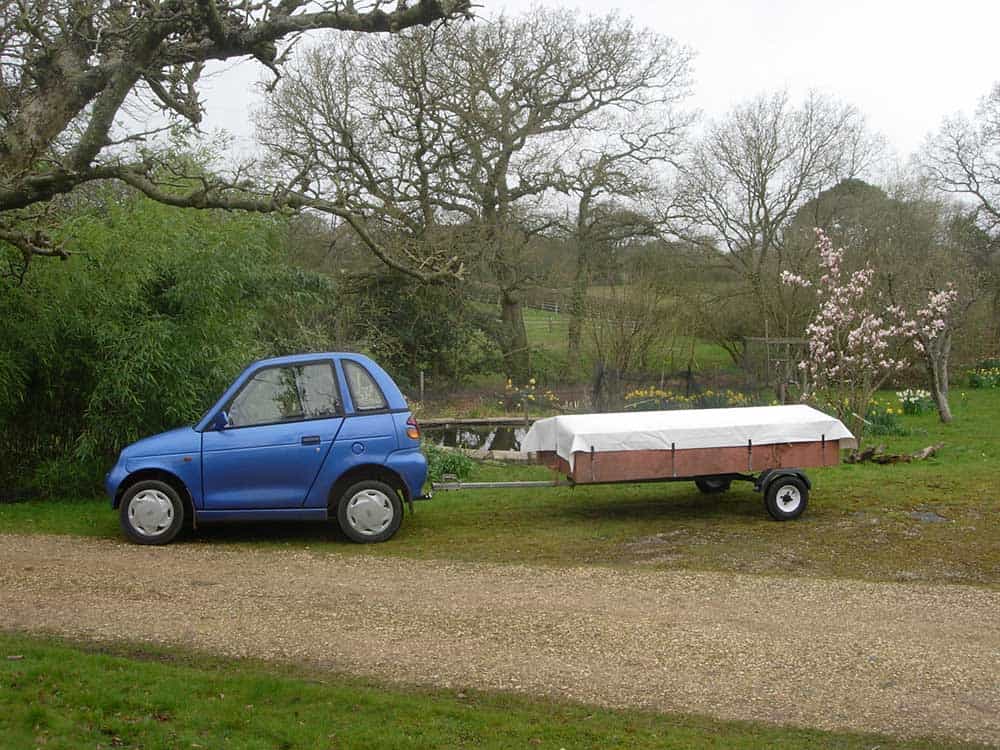
Separate flat plate solar hot water panels make much of their hot water.
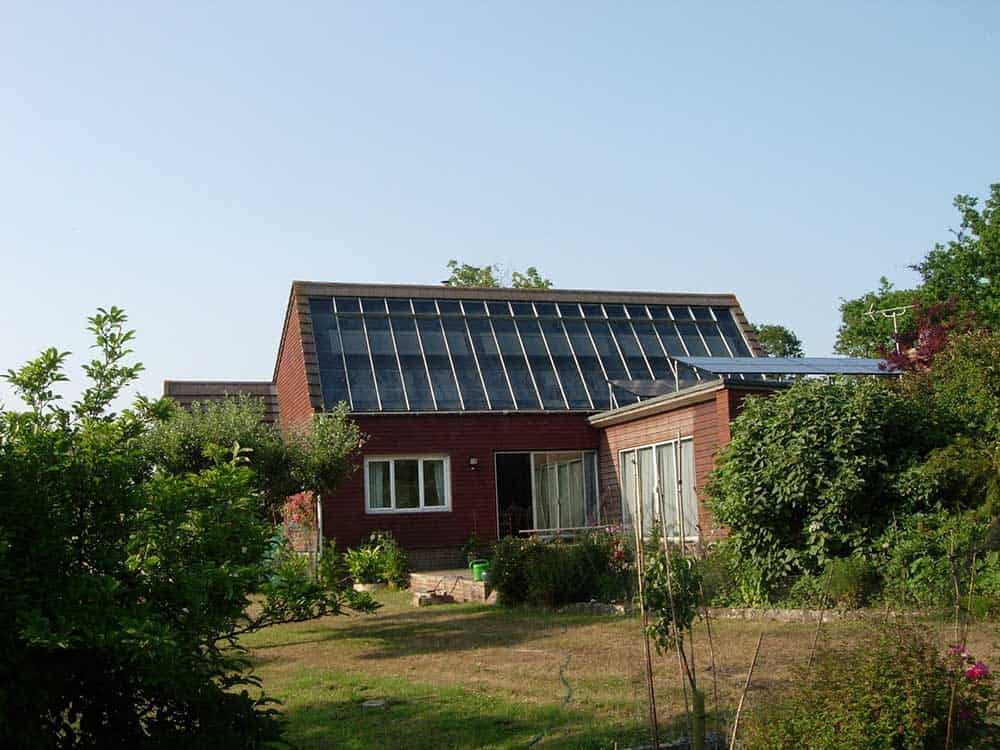
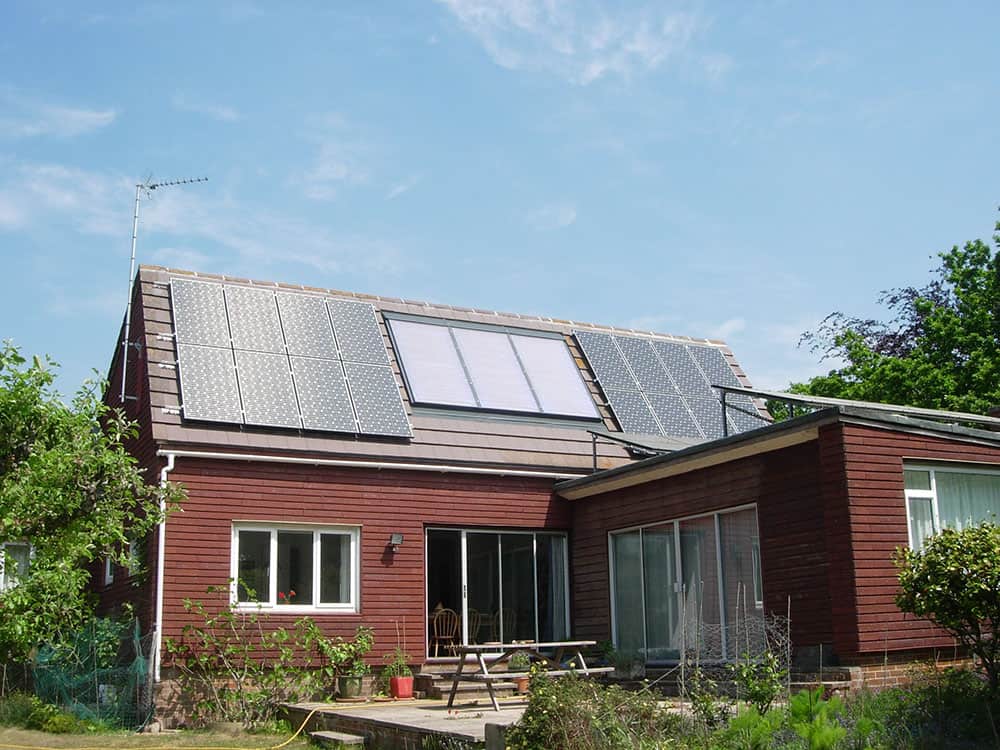
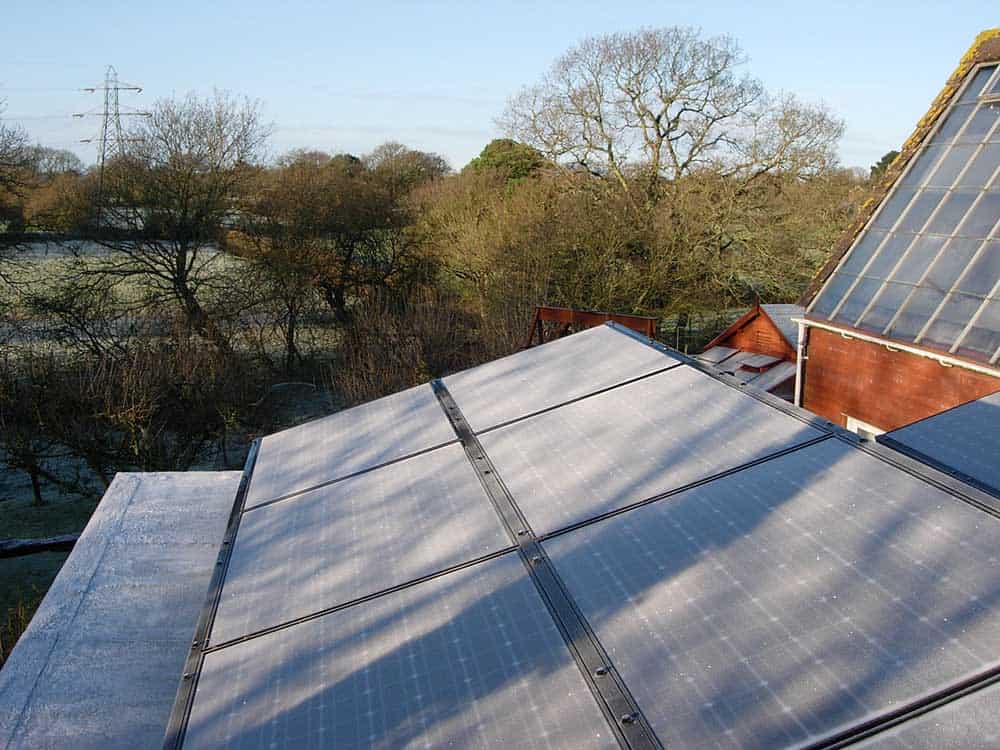
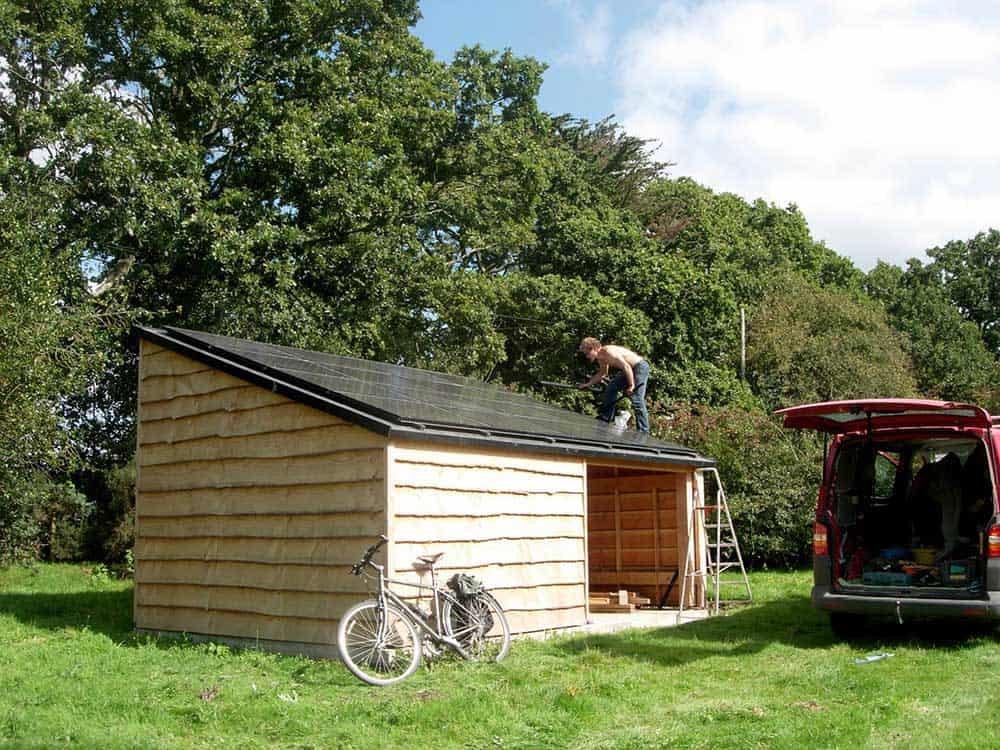
They have progressively improved the insulation of their cheaply built 60 year old bungalow with one room now close to the German Passivhaus Standard.
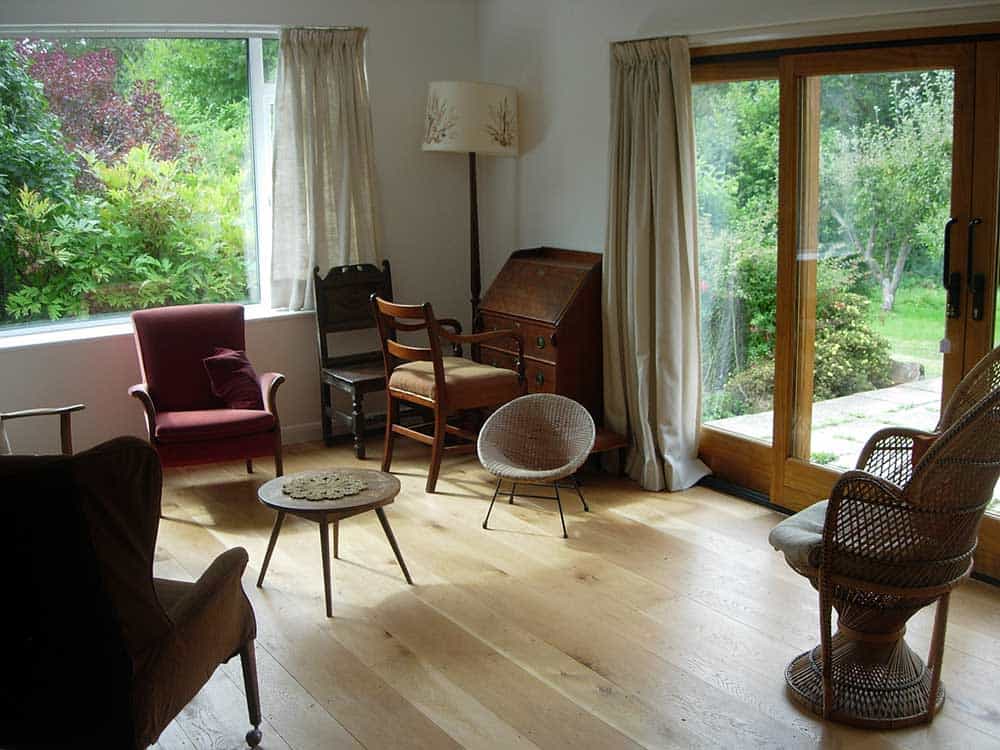
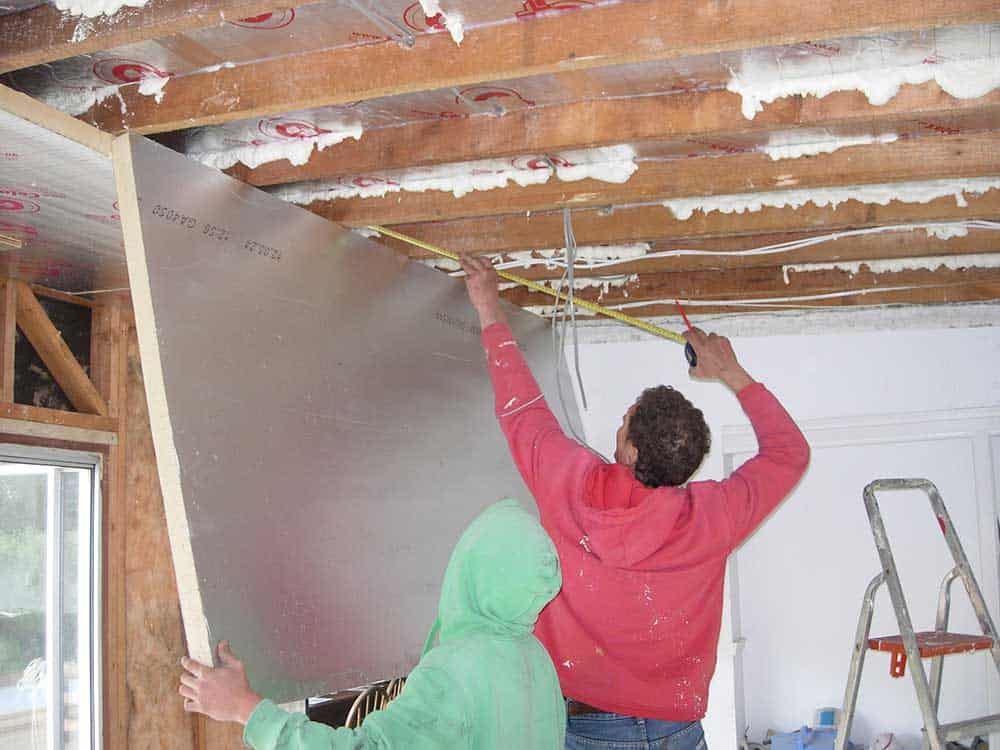
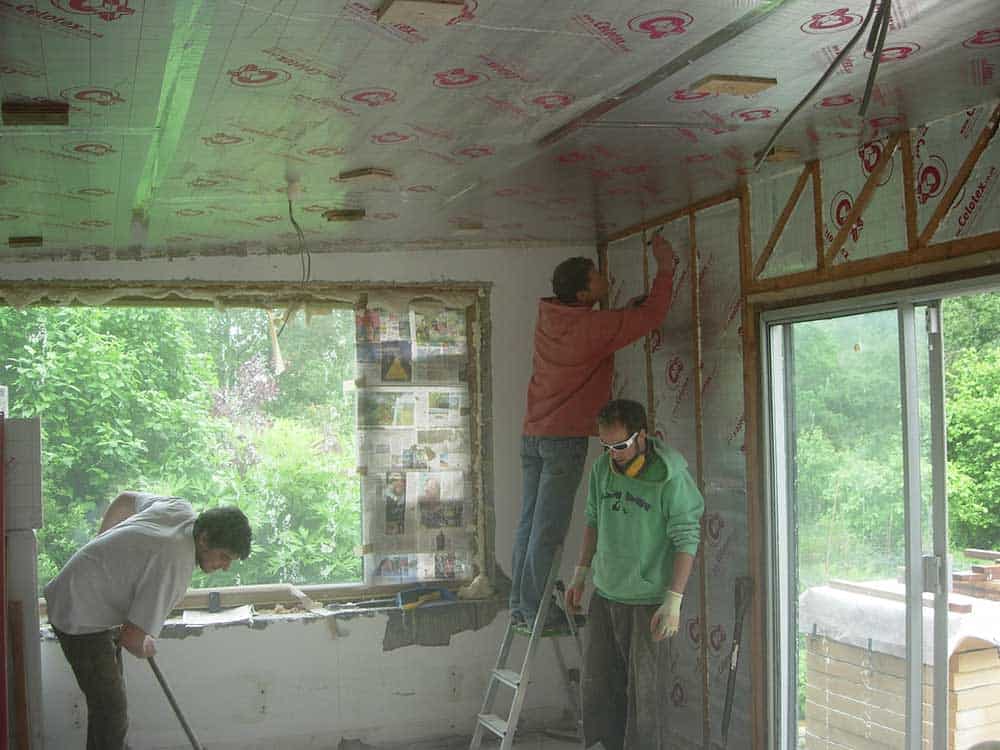
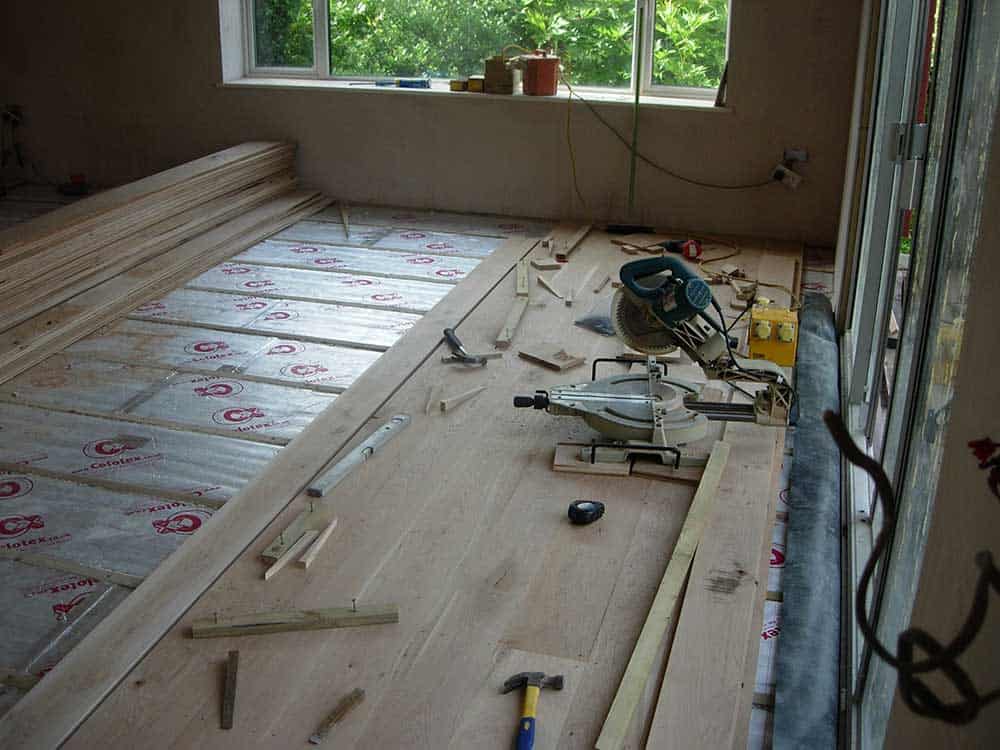
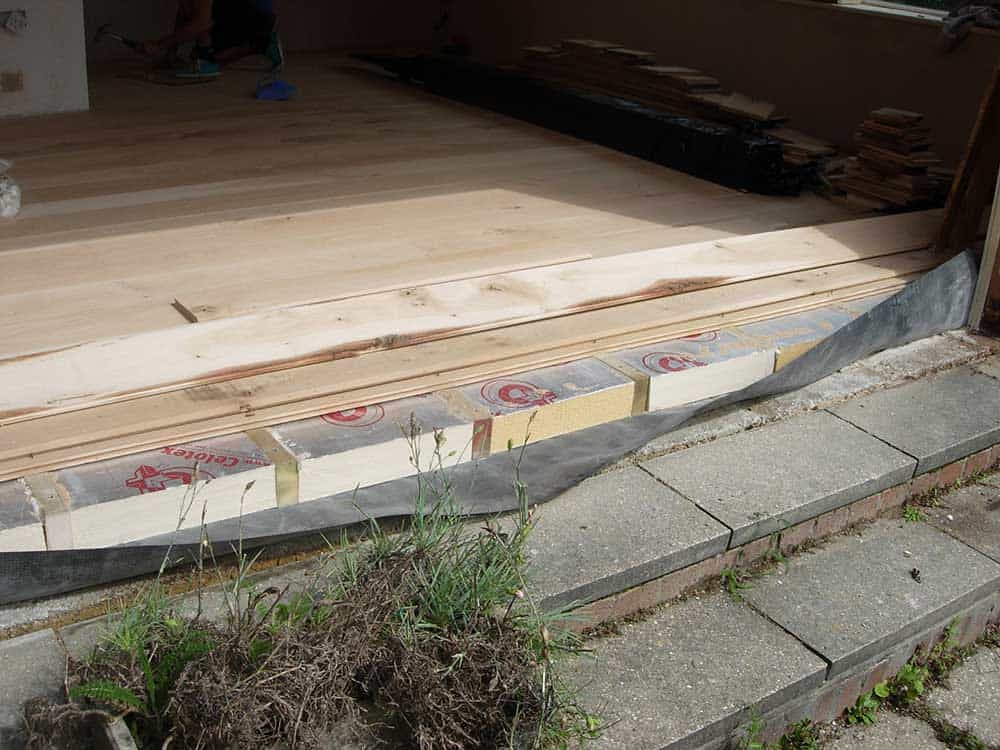
A relatively inexpensive Air Source Heat Pump heats this room with surplus heat overflowing to the rest of the house. 1 KW of solar electricity in the heat pump takes about 5KW of heat from the outside air and puts it into the super insulated main living room. In hot weather the process can be reversed to cool the house. An inexpensive heat recovery ventilator keeps condensation at bay. Their heating fall back is a wood burning stove with a back boiler to heat water when there is no sun. Burning wood does not affect carbon dioxide (CO2) concentrations and hence global warming because the CO2 produced during burning is absorbed when wood re-grows. If it was not burnt it would otherwise rot and anyway give off its CO2. One must only burn wood from a renewable source. The drier the wood is the better. It then produces far more heat when it burns.
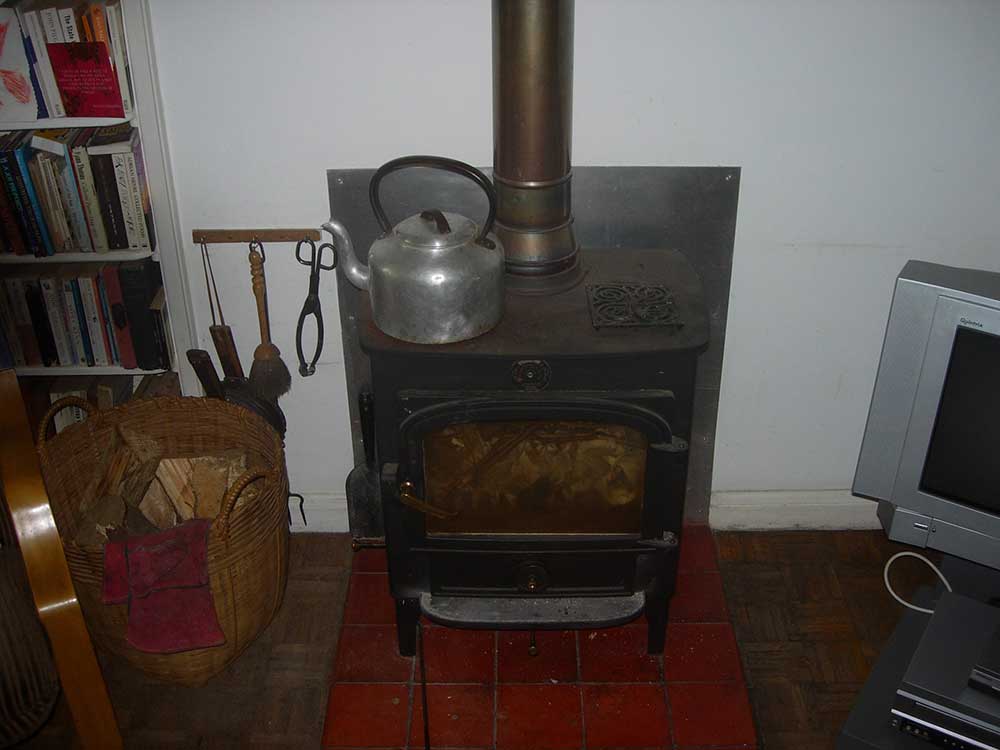
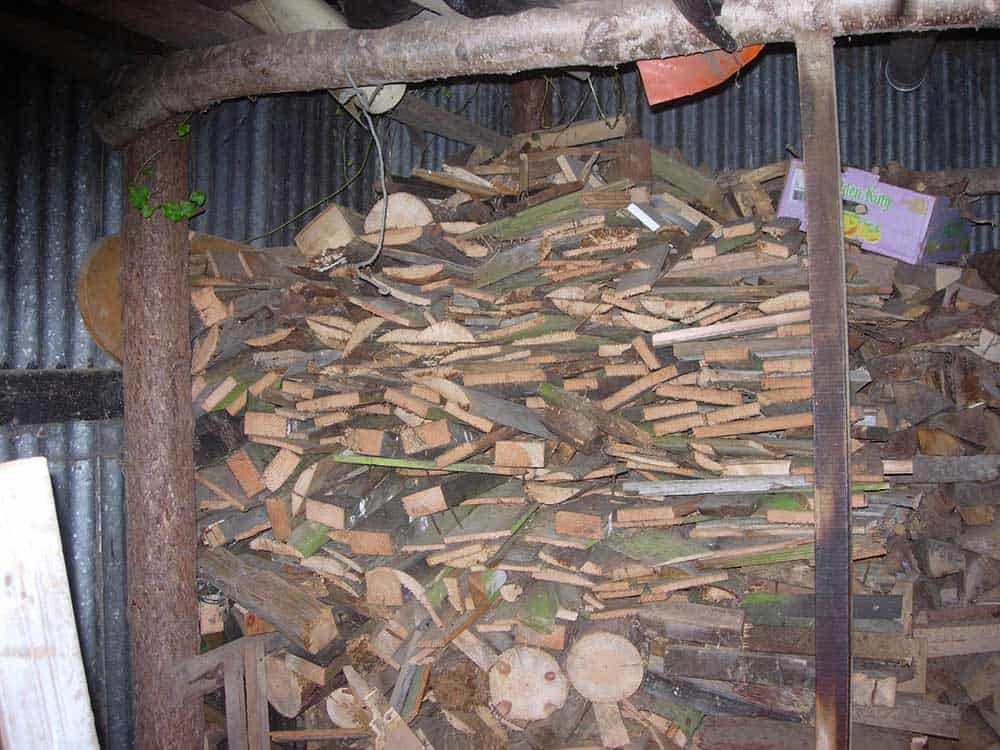
Long stored wood gets really dry, does not decay and locks up carbon where it can do no harm. Not a lot of wood is needed since it is burnt efficiently and the house is well insulated. Scrap wood is scrounged and dead or dying trees are cleared from neighbour’s gardens. Our couple switched off the oil fired central heating 40 years ago. They couldn’t afford it. Two years ago they had the gas supply disconnected and changed to an electric induction hob which combined with a conventional microwave and a home made ‘hay box’ supply all their cooking needs. In winter a big kettle often simmers on the woodburning stove.
For most people a major expense and source of the main greenhouse gas CO2 is transport. Remembering that they have to stop releasing any CO2 at all the couple only use their electric cars (a Renault ZOE doing up to 220 miles on a single charge (there are fast chargers available at regular intervals on all UK motorways now) and a lead/acid batteried G-Wizz for short local runs). They have only recently stopped cycling and are now in their 80s. When still cycling they used folding bikes and trains to travel extensively over quite a lot of the world. For long distances trains (preferably electric) are their chosen method. The problem is flying. As explained earlier for sound physical (and moral) reasons. There is no easy solution to this so they don’t fly but you can see an awful lot of the world by train now. A steel wheel on a steel rail is a seriously clever invention and do you really have to have your holiday in Thailand?
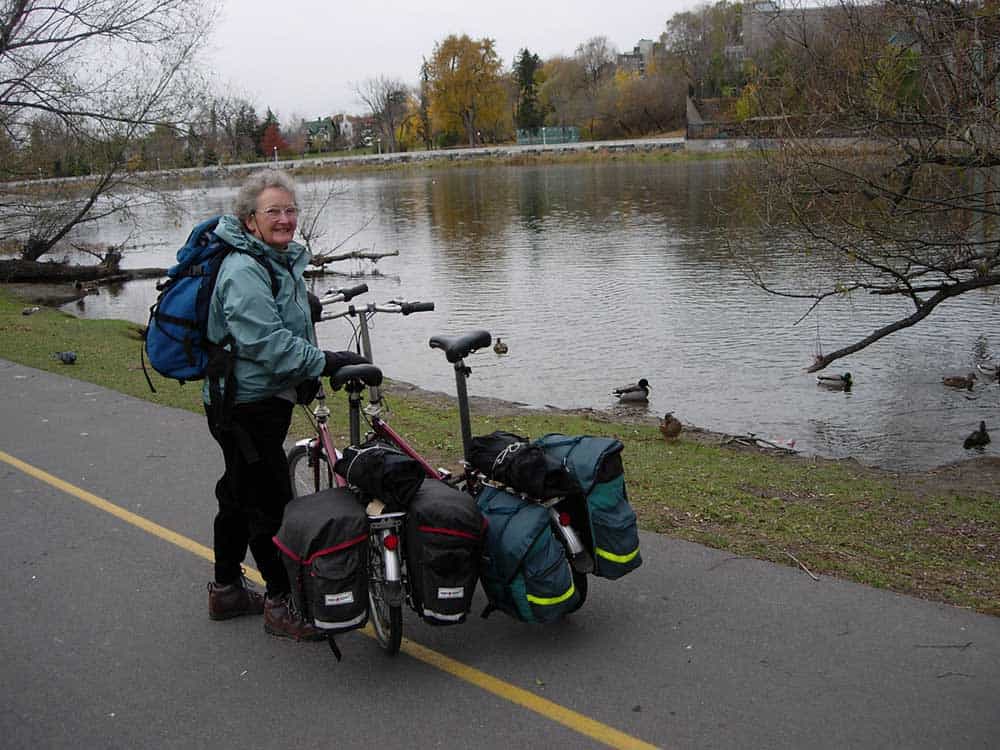
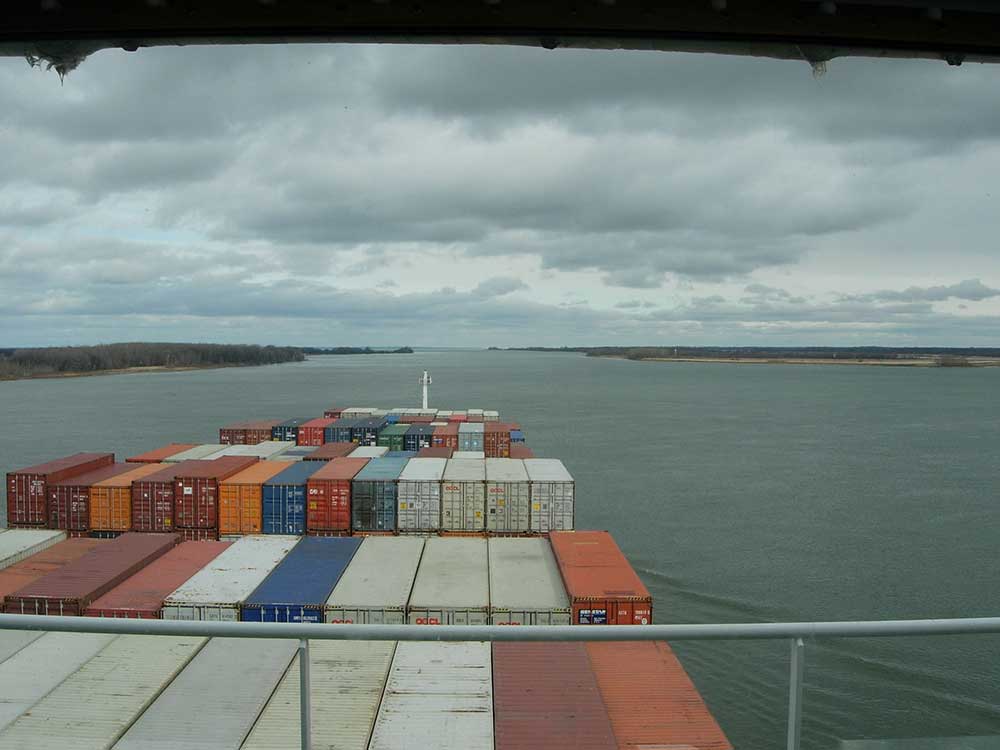
In looking for 100% zero carbon life styles we must remember that there are many different routes to that magical 100%. Our elderly couple realise that they are extremely lucky. They are retired on a small pension, have paid off their mortgage, live in the country with room on their low south facing pitched roof for plenty of solar panels

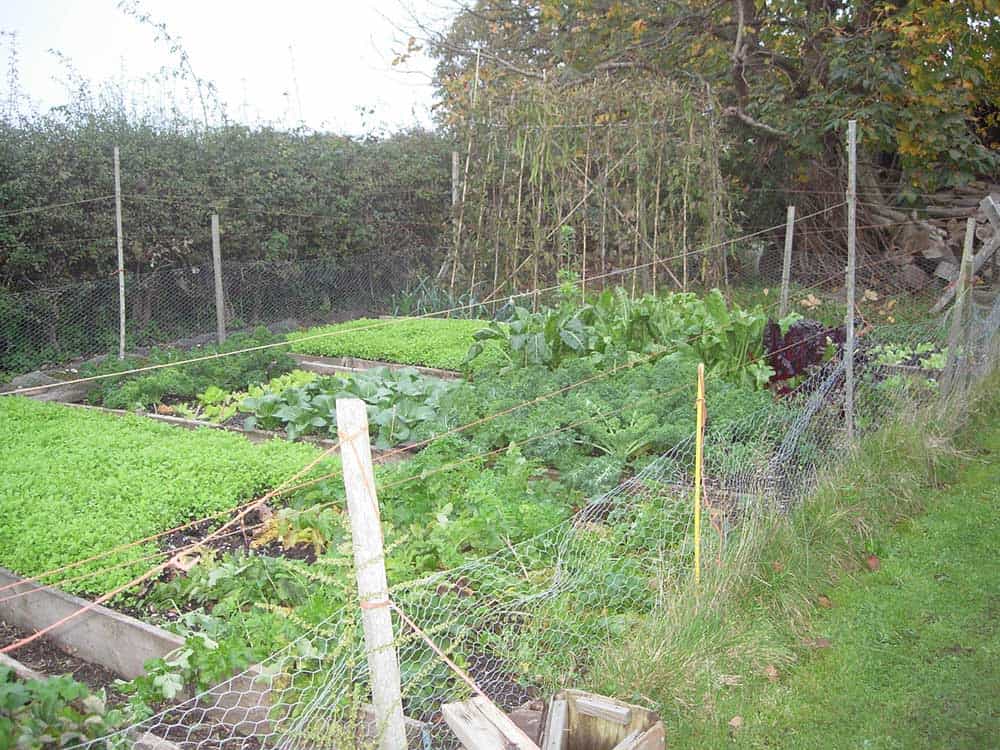
There are no local bylaws to forbid burning wood. There is room in the garden to grow vegetables and they have a large shed for storing firewood.

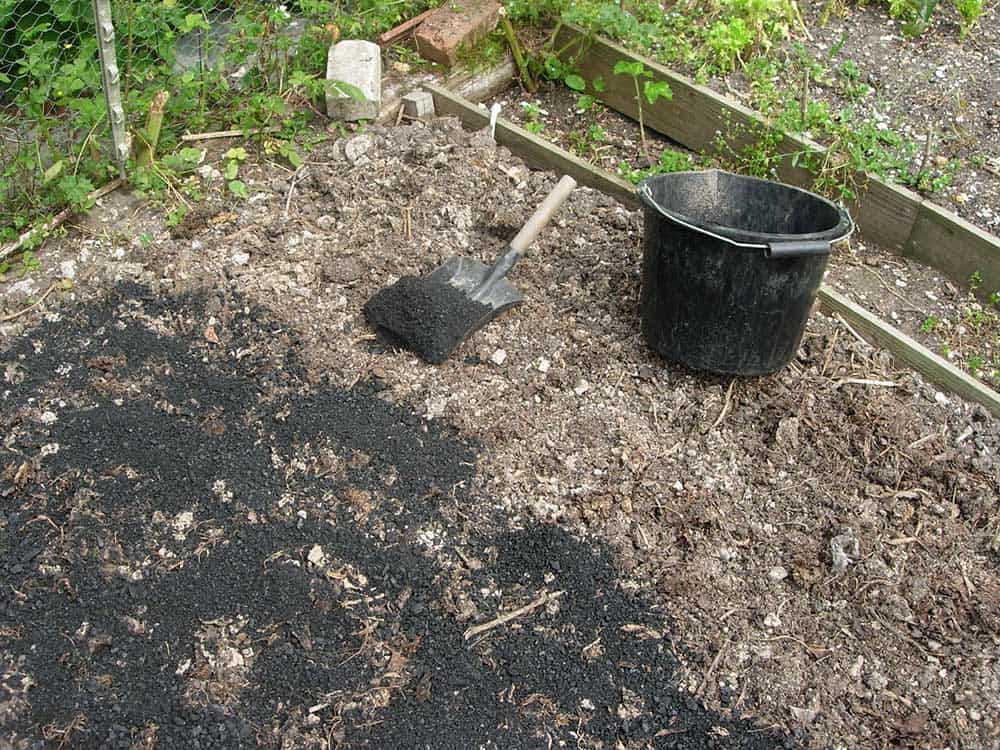
Off road parking next to the house makes keeping an electric car with it’s charging point straightforward. However for people who are not as lucky as our couple there are always solutions. With little money people should make their first priority to draught proof and insulate one room which they can retire to in the evening. Until they can afford an air source heat pump they should use a cheap thermostatically controlled electric fan heater and plenty of jerseys in their draught free and insulated living room. Never waste money on any sort of central heating. It is an expensive and polluting con! Can’t afford a car or it is impractical then buy a second hand bike and learn to maintain it. Try to live within cycling distance of your work. Make at least two polystyrene ‘hay boxes’ that fit your favourite saucepans. Negotiate a zero carbon electricity supply, it only costs a few pence more. Save up for an air source heat pump and induction hob and if you have central heating switch it off. Fit LED lights. These can save quite a lot of electricity. If possible get an allotment within easy cycling distance and explore the possibility of putting in a woodburning stove, often quite easy.
DF May 2017
Climate Change Policy 05
www.nfgp.org.uk/way-beat-climate-change/
Written by Dan Fish – Member of the New Forest Green Party
If you’d like to download the document as a pdf, please download by clicking here.
